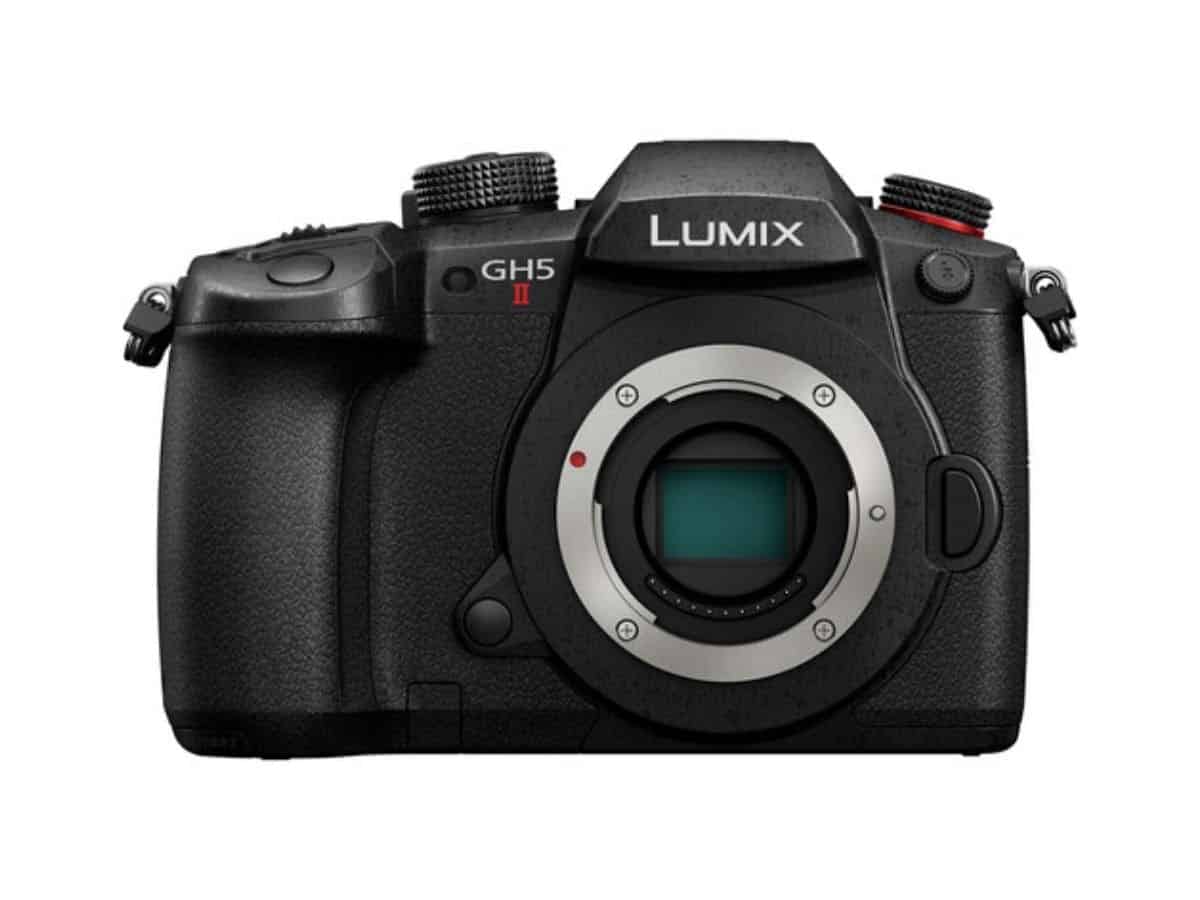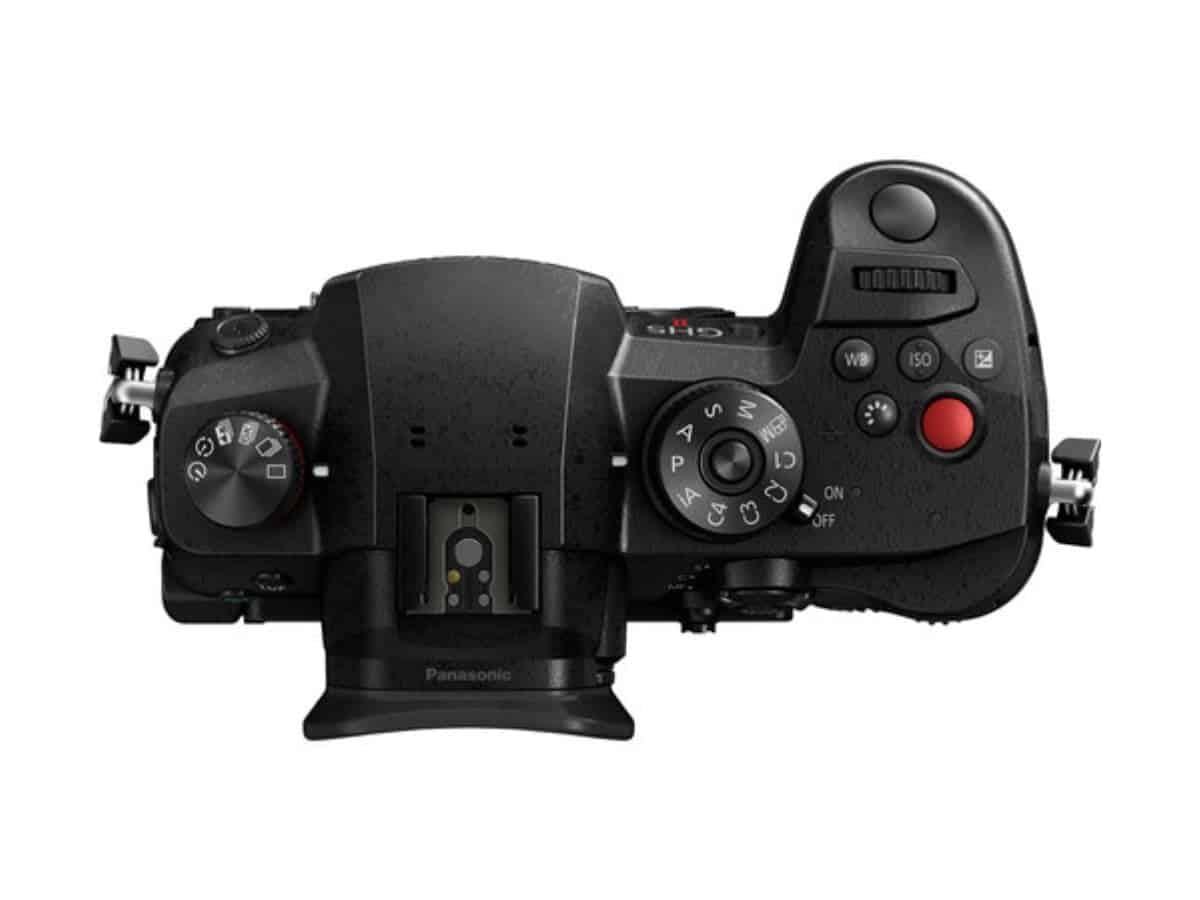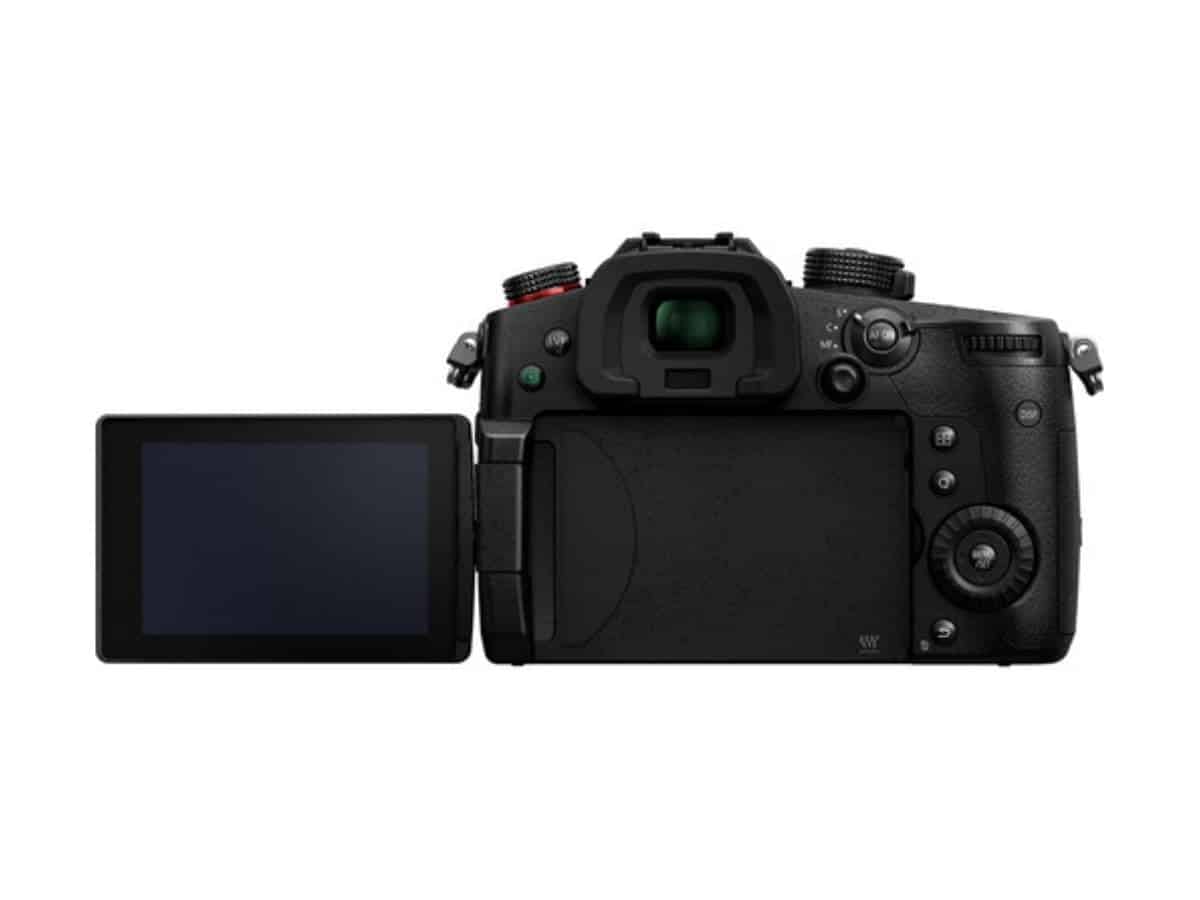The Panasonic Lumix GH5 II is a capable mirrorless Micro Four Thirds camera and a slight improvement over the original GH5.

Our take
Overall rating: 4/5
The Panasonic Lumix GH5 II is a refreshed version of the DC-GH5 with a few improvements, including a more powerful autofocus system, better video capabilities, image stabilization, live streaming, and a built-in log.
It has a 20.3MP Live MOS Sensor and uncropped 4K video. The GH5 II is a camera that photographers and videographers can appreciate.
While it’s an excellent camera, it’s a better fit if you take a lot of videos and don’t have the GH5. Given the price, the GH5 II is an impressive mirrorless Micro Four Thirds camera.
Related: The best memory card readers in 2021
Pros
- Dual I.S. 2 includes 6.5 stops and makes image stabilization incredible.
- 10-bit 4K60 video recording.
- Dual UHS-II SD card slots.
- V-Log L comes standard.
- Durable design made from magnesium alloy.
- Wireless live streaming.
Cons
- Not enough improvements to upgrade from the GH5.
- No RAW video recording.
- Large for a Micro Four Thirds camera.
Related: What’s a polarizing filter?
Compare prices
The following are the Panasonic Lumix GH5 II (body only) prices from different sites.
| Site | Price | Details | Link |
|---|---|---|---|
| Adorama | $1,497.99 | Free shipping. | Buy from Adorama. |
| Amazon | $1,497.99 | Free shipping. | Buy from Amazon. |
| B&H | $1,497.99 | Free shipping. | Buy from B&H. |
Key features
- 20.3MP Live MOS Sensor with anti-reflective coating.
- Venus Engine image processor.
- DCI or UHD uncropped 4K 60p video, 10-bit internal.
- V-Log L is pre-installed.
- Updated 5-axis sensor stabilization system.
- Improved autofocus with eye, face, and body detection.
- Live streaming via Wi-Fi or smartphone.
Related: How to shoot full-body portraits
Introduction

Panasonic released the Lumix GH5 II in 2021 as a refreshed version of the GH5, which launched in 2017.
It’s a mirrorless Micro Four Thirds camera with the same 20.3MP stabilized sensor that the GH5 has. However, Panasonic added a new AR (Anti-Reflective) coating to reduce flare and ghosting.
While you can capture great photos with it, the GH5 II is geared towards videographers.
It features UHD or DCI 4K 10-bit uncropped video recording at 30p and 60p, along with wireless live streaming. V-Log L now comes standard, which provides a high dynamic range and broad colors.
It also has a durable build that’s splash and dust-proof. Overall the Mark II is very similar to the GH5 and is a very good camera.
It doesn’t have big enough upgrades to get a new name, but the improvements are worth it if you don’t have the GH5. So, you get a lot of value for the price, and you can trust that it’ll last.
Specifications
The following are the Panasonic Lumix GH5 II specs:
| Camera Type | Mirrorless |
| Sensor Type and Size | 17.3 x 13 mm (4/3″) MOS |
| Sensor Resolution | Actual: 21.77 MP Effective: 20.33 MP |
| Lens Mount | Micro Four Thirds |
| Crop Factor | 2x |
| Battery | DMW-BLK22 Rechargeable Lithium-Ion, 7.2 VDC, 2200 mAh (Approx. 400 Shots) |
| Dimensions (W x H x D) | 5.5 by 3.9 by 3.4 inches |
| Weight (Body Only) | 1.6 lb / 727 g |
| Memory Card Slots and Type | Dual Slot: SD/SDHC/SDXC (UHS-II) [V90 or Faster Recommended] |
| Viewfinder Type | Electronic (OLED) |
| Viewfinder Eye Point | 21 mm |
| Viewfinder Magnification | Approximately 76x |
| Focus Type | Auto and Manual Focus |
| Focus Mode | Automatic (A), Continuous-Servo AF (C), Flexible (AFF), Manual Focus (M), Single-Servo AF (S) |
| Autofocus Points | Contrast Detection: 225 |
| Continuous Shooting | Up to 12 fps at 20.3 MP Up to 30 fps at 18 MP Up to 60 fps at 8 MP |
| ISO Sensitivity | Auto, 200 to 25600 (Extended: 100 to 25600) |
| Shutter Speed | Electronic Shutter: 1/16000 to 60 Second and 1 to 60 Seconds in Bulb Mode Electronic Front Curtain Shutter: 1/2000 to 60 Seconds and 1 to 30 Minutes in Bulb Mode |
| Shutter Lifespan | 200,000 cycles. |
| Image Stabilization | Sensor-Shift, 5-Axis |
| Built-In Flash | No |
| Monitor Size | 3 inches. |
| Monitor Resolution | 1,840,000 Dot |
| Display Type | Free-Angle Tilting Touchscreen LCD |
| Video Resolution | 4K |
| External Recording Modes | 4:2:2 10-Bit |
| Recording Limit | Unlimited |
| Live Streaming | Yes |
| Webcam Functionality | Yes |
| Connectivity | USB Type-C (USB 3.1), HDMI A (Full Size), 2.5mm Sub-Mini, 3.5mm Headphone, 3.5mm Microphone |
| Working Temperature Range | 14 to 104°F / -10 to 40°C |
| Working Humidity Range | 10 to 80% |
Body and handling

At 5.5 inches wide, 3.9 inches high, and 3.4 inches deep, it’s compact and easy to carry around. For a Micro Four Thirds camera, it’s considered large.
The body is almost identical to the GH5. So, if you have it, you won’t feel much of a difference.
Its screen is slightly smaller, as it’s 3 inches compared to 3.2 inches. However, it’s brighter with a higher resolution of 1,840,000 dots.
The magnesium alloy construction gives it a solid and tough feel. All of the joints, buttons, and dials are sealed to keep out dust, moisture, and splashes.
It also has an excellent grip that’s large and comfortable, with enough room for all of your fingers. On the side are dual memory card slots. You can now maximize it by using V90 UHS-II SD cards.
On top of the GH5 II, there’s a red record button that’s easy to see, but it’s not as easy to find without looking. There are also buttons to adjust the white balance and ISO.
Nearby, you’ll find the shutter button, a dial to adjust the shooting mode, and a lever to turn the camera on or off.
On the back, you have a responsive touchscreen vari-angle LCD, a Q button, a small joystick, and a menu button. All of the buttons and dials are intuitive and many are customizable.
Additionally, the GH5 II uses the DMW-BLK22, which is a more powerful battery. It’s rated at 2200 mAh and offers approximately 400 shots per charge.
Performance

Panasonic’s GH5 II performs well, but it’s better for videos than it is for stills. When you look at the GH5 II as a whole, it’s great.
It has the latest Venus engine, which provides improved speed and performance, and it also has a higher-capacity DMW-BLK22 battery. You can expect around 400 shots per full charge.
Image quality
The GH5 II has a 20.3 MP Live MOS Sensor with an anti-reflective coating to reduce flare and ghosting. The coating is beneficial when you’re shooting under strong light sources, such as bright days or bright lights at night.
Compared to the GH5, the Mark II has better image stabilization because Panasonic added a 6.5-stop in-body image stabilization system. It allows you to capture sharp photos while using slower shutter speeds than the GH5 and many other cameras.
The GH5 II also has an improved autofocus system and setting the focus point is easy, as you can use the touchscreen or joystick.
Its greatest limitation is the 20.3 MP sensor. The high-ISO performance is lacking and you can’t take stunning high-resolution photos.
If you want a high-resolution camera with amazing low-light performance, look elsewhere.
For image quality, the GH5 II is a good camera. Not bad, but not great. The photos are still sharp and crisp when you use a low ISO.
Video
Video is where the GH5 II shines. Its maximum frame rate has improved, as it’s now 4K60 instead of 4K30.
Keep in mind that at 60 fps, you’re limited to 4:2:0 color sampling. Whereas 24 and 30 fps samples at 4:2:2, which will retain more color.
The GH5 II doesn’t record RAW videos, but the built-in V-Log L helps offset that drawback. It gives you a high dynamic range, which gives you more room to edit.
The updated image stabilization system helps you take smooth videos, and the improved autofocus is faster and better-performing.
However, you’ll still notice a bit of lag when it comes to autofocus at 24p. It’s hard to avoid due to the contrast-detect-only autofocus system.
The autofocus does work better at higher frame rates, such as 60p, since it’ll have more information.
Another great video feature is wireless live streaming. You can use the Lumix Sync app to live stream. It’s one of the few cameras that offers high-quality live streaming.
Overall, the video quality is excellent, which is incredible considering the Micro Four Thirds 20.3 MP sensor. You can produce high-quality videos with rich colors and details.
Frequently asked questions
Is the Panasonic Lumix GH5 II better than the GH5?
Yes, the GH5 II is better than the GH5 because it has an improved autofocus system, image stabilization, video capabilities, live streaming, and built-in V-Log L.
Does the GH5 II shoot RAW video?
No, the Panasonic Lumix GH5 II doesn’t record RAW video. However, the 4:2:2 10-bit recording using the V-Log L profile can give you an excellent and similar dynamic range.
Is the Panasonic Lumix GH5 II good for photography?
While it thrives with videos and there are better cameras for photography, the Panasonic Lumix GH5 II is still a good camera for photography. The 20.3 MP sensor and great autofocus system can capture attractive photos.
Is the Panasonic Lumix GH5 II for you?
The GH5 II is one of the most capable stills and video cameras available. However, it’s not for everyone.
If you currently have the original GH5, it’s not worth the upgrade unless you really want the Mark II. If you shoot mostly photos, it’s not the right fit.
It’s the ideal camera if you want something that can take great photos and stunning 4K videos for less than $2,000.
Be sure to also consider the Fujifilm X-T4, as it’s a comparable and high-performing camera.
Featured image courtesy of B&H.
